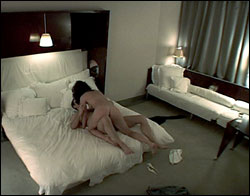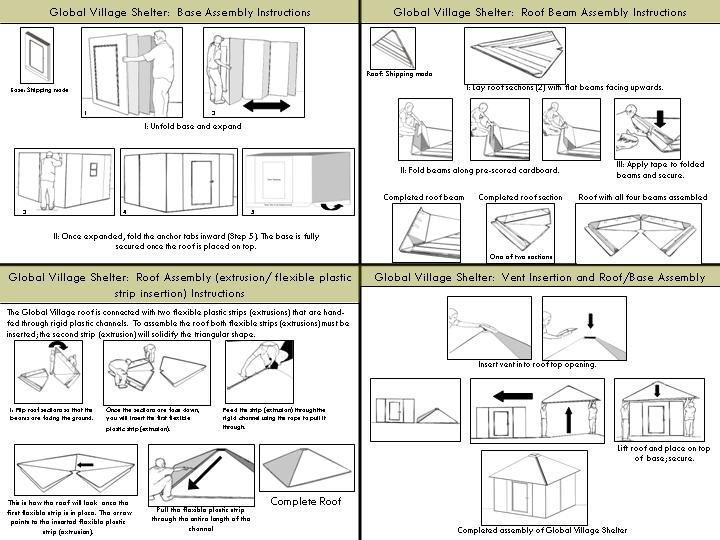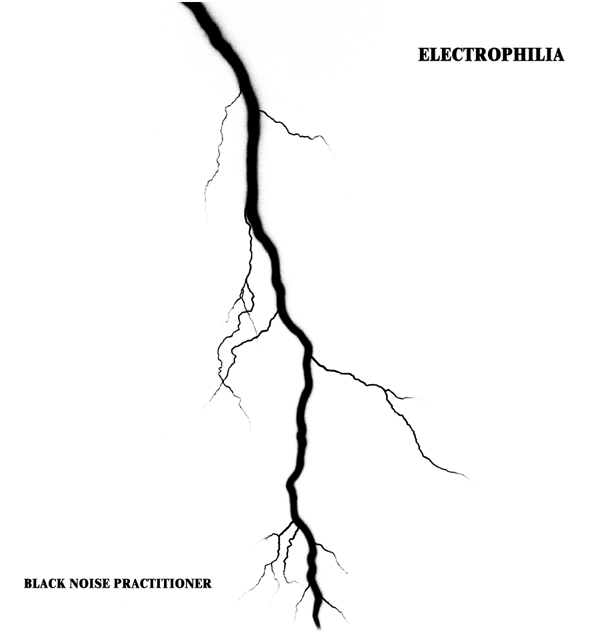Schwarz
View current page
...more recent posts
JA: The big difference is that we had worn down one of the great experiences of that century, which was modernism. Maybe the label "postmodern" is overrated and doesn't mean much anymore, but nevertheless modernism was available to be consumed. You could extract its side effects and replay them however you wanted. In the '80s you would do that consciously. You were dealing with the fact that things had been made before. The '60s in a festive way-and the '70s in a more moralistic way--were a time when everyone was trying to make signature pieces, perfect inventions. That was gone in the '80s. You were just doing your thing and using what was available, but you were still quoting the sources. The difference today, when suddenly the '80s seem so "period," is that although younger people are still lifting and recycling, they just don't care about the sources. They don't even know about the sources. So they have another kind of freedom. But suddenly, for the those who try and twist it-and that's few of them, I wou ld say--the '80s are as distant as the '60s and '70s.
flatpack house
no time
As far as someone "appropriating" Mondrian, that is, I think, impossible.
And this impossibility is quite interesting. Mondrian, from around 1920 on,
is no longer an "author." Thus there is nothing to appropriate. He was
involved in a school called "the style," the object of which was, ideally at
least, to produce a totally anonymous art. He encouraged this, and became
upset when certain members of "de styl" deviated from his way of doing
things. There are, in fact, already a great many "Mondrians" painted by
others. Once, when given some advice in speeding up his extremely
painstaking methods, so he could be more productive, he answered: "I do not
need more paintings. I need to understand." I think Mondrian would be
extremely pleased that yet another artist would be interested in using his
approach. And, as a friend of Duchamp (there was mutual admiration here),
he would probably have understood her "need" to exactly duplicate one of his
paintings (if this in fact is what she has done). In any case, in my view,
Mondrian's work is undeconstructible, or, let us say, at least as
undeconstructable as that of Derrida.
correcting and adding to the record on : STEVEN PARRINO
Steve always had a neat studio. There was never a big storage closet full of older works. Although we were friends I never really caught him at work putting together those big scale piss elegant abstractions. I do know studio mates of his however who did spend time with him working who mentioned that he had a habit of either destroying, reusing (refucking-up) or painting over unsold pieces. Some of those canvas wads were old (often exceedingly successful ) stretcher pieces. Pieces in one show would be repainted, usually trending to black for the next show. I think he took a que and ran with it, as this is something (best friend and biker buddy) Olivier Mosset does too: repainting old pieces for new shows. This would suggest that there is precious little work(for someone with 37 solo shows) outside of the sold pieces. I'm hearing that Steve didn't keep much of a record of this process. That may make for something of a challenge in assembling his catalog raisonn'e. With any luck written and photographic gallery and museum records of works destroyed, transmuted and physically same (painted-repainted) paintings with different names, identities and meanings will form a convolutedly accurate history. I would hope that this important aspect is explored in Parrino's upcoming major survey show currently being planned by Geneva's Musee d'Art Moderne et Contemporain for October 2005.
note: Parrino's destruction of unsold paintings has a wholly different meaning from the destructive editing activities of precedential modernist's like de Kooning and Baldassari. This may have been fully obvious but is just dawning on me now, posthumously.
-Bill Schwarz
"Never really intended for construction, Living Pod was a humorous dig at the established way of doing things, suggesting that houses didn't have to be symmetrical, brick-built boxes. In its obvious debt to spacecraft aesthetics, it also seems to celebrate the possibilities of new technologies and new materials--an adaptable, functional, clip-together kind of future."
"Archaeologists uncover Mies van der Rohe villa
Archaeology is getting more modern—or rather, its uses are. The foundations of a villa built 1925-27 by the eminent Bauhaus architect, Mies van der Rohe, have been uncovered in the Polish town of Gubin. It was the first Modern building by the architect, commissioned by industrialist Ernst Wolf and destroyed in World War II. The excavation project was carried out by an international team of 12 students from the Technische Universität at Cottbus. The villa may now be partially rebuilt or used to inspire artistic interventions"
the sound sculpture of harry bertoia
Claude Oakland
Modern homes for the masses
"From its inception, modern architecture had a social conscience. Especially in the optimistic years after World War II, architects nationwide hoped they could build careers designing dwellings for everyman.
But almost none of them did. Many designed public housing, small tracts and homes for their friends in academe. But most whose careers remained residential ended up building primarily for the well-heeled."
[...]
digital programmable thermostat
"Here's a neat idea for a new television series. Let's get the public to nominate the six vilest books in the English language and in the grand finale, they get to burn them live on camera. No, we haven't come to that yet, but later this year, Channel 4 is offering us the next best thing. Demolition is a four-part series that promises as its climax the total destruction of a major piece of architecture. Or as Nick Kent, the executive producer, puts it: 'The final night of the series will see a spectacular celebratory demolition of one of the nation's nastiest eyesores.'"
Two works of Steven Parrino shown recently in Europe (Milano, Italy and Dijon, France) bring back home thoughts on that 20th century thing called abstraction.
Blob Fuckhead Bubblegum, a big ball of pink painted canvas (100 yards) tightened with duct tape, and Aluminum Clouds (Crush), for Drella (by the way, kiss my ass you wigged corpse) or Lost Hope and the End of Painting, which consists of a number of small bundles of silver painted canvas also held together with duct tape, seem to be an appropriate response to today's confusing pluralism in the arts. Painted monochrome canvases unattached and rolled into bundles clenched with tape - look like what you would do if you wanted to throw away some large, failed paintings. Of course, Steven Parrino didn't get rid of them, he is showing them.
By taking his paintings off the stretcher, rolling them into balls and putting them onto the floor, he is redefining a debate on the conventions of painting and that affair of the integrity of the picture plane. By destroying the surface and the shape of his canvases, he makes his paintings become a kind of sculpture, or more exactly something that is "neither painting nor sculpture." Because of the radicality of his gesture, he also sends the old debate about flatness or the problem of the canvas's outer edge to the dustbin of history.
We know that painting will not die (Philip Taaffe) or that it already died and we can't get rid of its corpse (Sherrie Levine); Parrino himself poses the situation: why not engage in some necrophilia?"
Of course, unstretched material has been seen before (antiform, Support-Surface, Sam Gilliam and others), but here the violent and aggressive dislocation of the picture seems to mark for painting something close to the end of the road. Maybe the only way you can pay attention to the surface of the picture is by destroying it ("Everybody kills the thing he loves").
Parrino's aggressivity in his work and his titles should be welcomed at a time when contemporary art is attacked directly (by certain members of the Congress and Senate) or indirectly (The New York Times, "The Jabberwocky of Art Criticism." Sunday, October 23, 1995). Of course what is really under attack is precisely those progressive attitudes like Parrino's that tend to question the nature of art.
Olivier Mosset
BOMB Summer 1996, No. 56
2004 top ten

1 - wfmu top ten list
2 - andrea fraser from walter robinson's top ten list
3 - red states come out
4 - sherry levine continues to do mediocre work
5 - richard prince continues to do mediocre work (spot trend?)
6 - mediocre shipping container houses hit the nyc art scene and get a mediocre review in architects news paper
7 - frank lives in a drat hole on dave's page
8 - selma actually knows about art and architecture
9 - terminal five show from tom moody's top ten list
10 - my show of a ten year old piece (my first 1000 wrenches) in lori bortz's garage, a studio visit by bob nickas and palemale starts rebuilding his nest
addendum : bbca starts broadcasting trailer park boys south of the border

bootlegs
richard prince the second house
the science between earthquake and the sunami's landfall
clay house via houses of the future

relief housing
case study bird houses
thanks to linda

